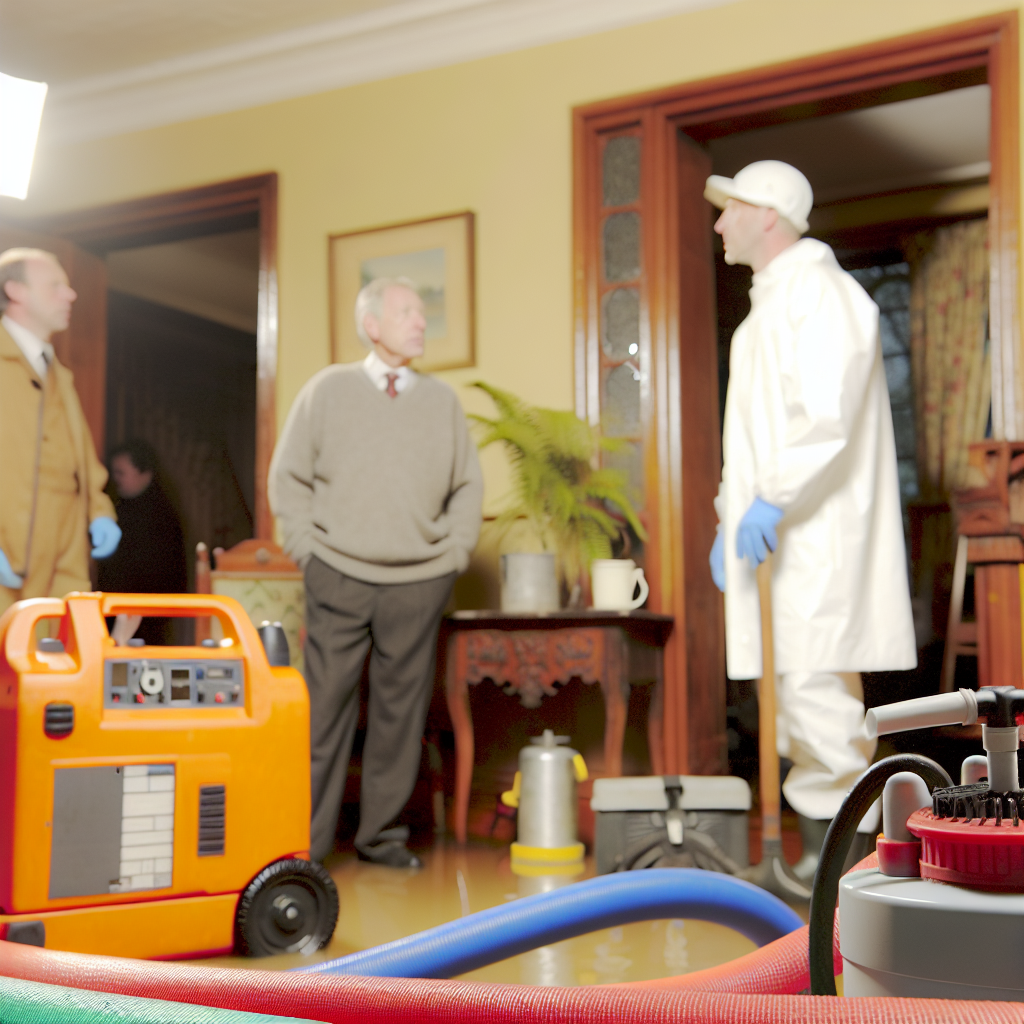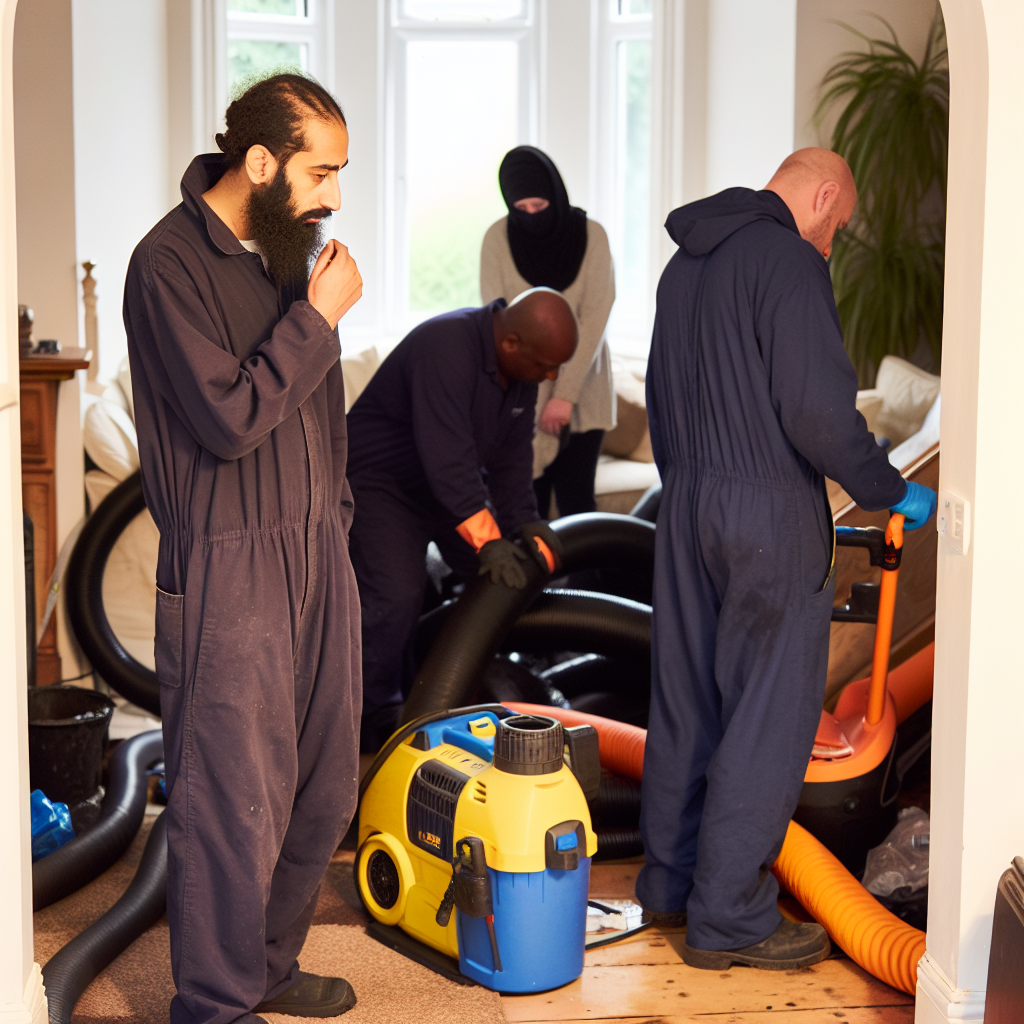Introduction
Floods can be devastating, causing substantial damage to properties and disruption to lives. In the UK, climate change is exacerbating the frequency and severity of such extreme weather events, highlighting the growing importance of competent flood damage cleanup and restoration. This comprehensive guide aims to equip property owners with the necessary knowledge and steps involved in restoring their properties after a flood. The guidance offered in this article can help initiate the process, expedite recovery, and minimize losses.
Understanding Flood Damage
The severity and extent of flood damage can vary widely depending on the circumstances of the flood. The type of water involved—clean, grey, or black—can affect both the cleanup procedures and the damage. For example, black water, typically from seawater, ground surface water, or sewage overflows, is highly toxic and may render some materials unsalvageable [1].
Key Points:
– Understand the type of water involved
– Recognize that some materials may be unsalvable
Safety First: Essential Precautions
Flood damage can introduce numerous safety risks, from electrical hazards to unsanitary conditions. It’s crucial to ensure the safety of all involved before embarking on cleanup efforts. Professional advice or assistance may be necessary to manage these risks appropriately.
Notably, the aftermath of a flood is often not the time for DIY. Flood waters can be contaminated with sewage, chemicals, and other hazardous materials. In many cases, it’s best to leave the cleanup to professionals [2].
Initial Flood Cleanup
Once the floodwaters have receded, the initial cleanup begins. This involves identifying salvageable items, disposing of ruined possessions safely, and drying out the affected areas. It may also include removal of mud, silt, and any debris deposited by the water.
The UK Environment Agency provides a detailed guide for cleaning up your house after a flood [3]. This includes special precautions to take while cleaning, what to do if your house is still flooded, and how to dispose of damaged furniture and personal items.
Long-term Restoration and Flood Resilience
Flood damage can have long-term effects if not adequately addressed. Continual dampness can lead to the growth of mould and structural deterioration. Therefore, a comprehensive and professional restoration process is crucial to return the property to a safe condition.
Taking steps to make your home more resistant to future flooding is also an essential part of long-term restoration. This process called “property-level resilience,” involves the installation of flood resistance measures such as demountable flood barriers and air brick covers [4].
Conclusion
In the face of increasing extreme weather events, understanding flood cleanup and restoration has become increasingly critical. Performing immediate cleanup and ensuring the long-term restoration of your properties can mitigate the impacts of flood damage. By following the steps outlined in this guide and employing the services of professionals when necessary, you can safeguard your investment and your health.
Frequently Asked Questions
How long does it typically take to clean up after a flood?
Time for cleanup can vary significantly based on the severity of the flood, the extent of damage, and the speed of response. It can take days to months for a complete cleanup and restoration.
What types of health risks are associated with floodwaters?
Floodwaters can carry a myriad of hazardous substances including bacteria, viruses, moulds, chemicals and pollutants, posing risks to human health.
What should I do with damaged possessions?
Many damaged items can be disposed of via standard waste disposal services, but some may require special handling, especially those contaminated with hazardous materials.
References
[1] UK Gov. (2019). “After a flood: cleaning up your house”. Gov UK. Link
[2] Berry, R. (2019). “The safe way to deal with a house flood”. Ideal Home. Link
[3] Environment Agency. (2018). “What to do before, during and after a flood”. Environment Agency. Link
[4] Ball, T. (2018). “Building flood resilience: an introduction to property flood resilience”. BRE Group. Link




